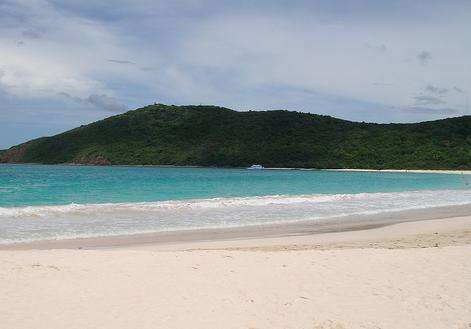From laid back to beachfront deluxe, Puerto Rico is an island offering so many vacation experiences that it calls itself “The Continent of Puerto Rico.” Want to be waited on hand and foot or would you rather forego the air conditioning for the rustic reality of a rural parador out on the island? In the busy capital, San Juan, you’ll find sightseeing attractions, luxury hotels, superb restaurants, exciting nightlife, and dazzling casinos. Out in the countryside, the mood is quite different—it’s another world, several other worlds, actually. Spanish colonial towns, a lush rain forest, quiet seaside restaurants and golden beaches await you.
The island has a rich Spanish heritage that fascinates visitors. Following the Spanish-American War in 1898, Spain ceded the island to the United States, and in 1917 Puerto Ricans were granted US citizenship. Today, there is a harmonious mingling of Spanish and American cultures.
The spirit of the colonial period is most evident in Old San Juan, where numerous historic sites and monuments have undergone restoration in an effort to preserve Puerto Rico’s rich heritage. The fortress walls that guard San Juan’s harbor at Fort San Cristobal are notable as a strategic masterpiece with its 17th Century military design and an intricate network of tunnels. Castillo de San Felipe del Morro is a commanding six-story fort with towers and dungeons to explore.
A combination of mountain ranges and the prevailing trade winds divide the island into several climate zones. A lush tropical jungle covers the eastern mountains as the peaks are drenched in rain and shrouded in the cloud forest at El Yunque. See brightly colored parrots, fragrant orchids and over 200 species of tropical ferns and trees. Popular hiking and walking trails take you through forests and gardens to cascading waterfalls. North and west of the mountains, short grasses and cacti mark the landscape.
San Juan has grand beaches for sunning and clear waters for swimming, snorkeling, and other water sports. Along the island’s 272 miles of coastline you’ll find beaches dotted with swaying palm trees and private sandy coves. The continental shelf that extends along three sides of Puerto Rico offers an abundance of coral reefs, caves, sea walls, and trenches for scuba divers to explore. Boating, fishing, and sailing trips are readily available all around the island.
Away from the water there is plenty of activity too. Golf, tennis, horseback riding, hiking, bicycling, and that old favorite, shopping is available in San Juan and around the island. Artisans’ shops and craft centers display many artworks that portray life on the island. There’s even horse racing at the El Comandante.
You can dine in cosmopolitan style in San Juan where resorts and international restaurants feature sophisticated ambience and formal service. Some of the island’s best restaurants, known as mesones gastronomicos (gastronomic inns) are outside the San Juan area; they feature local specialties at quite reasonable prices.
Visitors enjoy Puerto Rico’s tropical climate year-around. Average coastal temperatures are a comfortable, 75-83 degrees Fahrenheit; slightly cooler in the evenings and in the mountains. Summer highs can hit 95 degrees Fahrenheit, but the eastern tradewinds keep the air moving. Average annual rainfall is 62 inches, with susceptibility to summer storms and hurricanes from August-October.
Whether you choose to spend your vacation at a sleek resort in the capital or at an unpretentious inn in the island’s traditional countryside, it probably won’t take you long to discover why Puerto Rico is one of the most popular Caribbean destinations. Lying 1000 miles southeast of Miami, 80 miles east of the Dominican Republic and 50 miles west of the US Virgin Islands, Puerto Rico is the easternmost and smallest of the Greater Antilles. Three small offshore territories flank the main island: Vieques, Culebra, and Mona. Immerse yourself in this creative culture as you explore the historic sites and peaceful countryside of this fascinating island.



